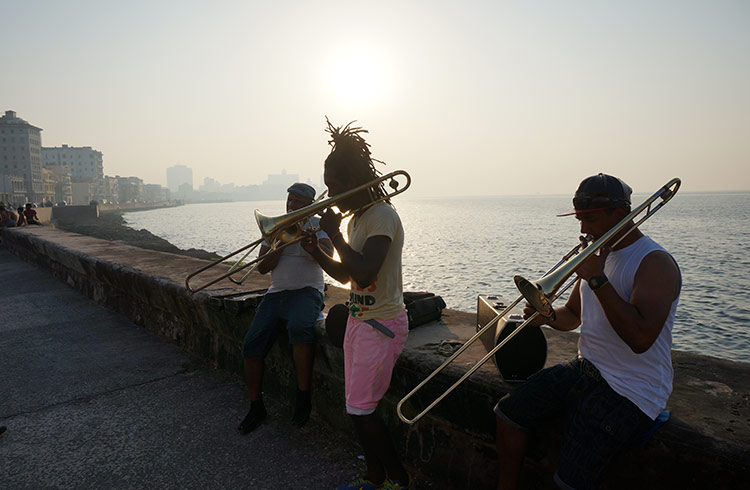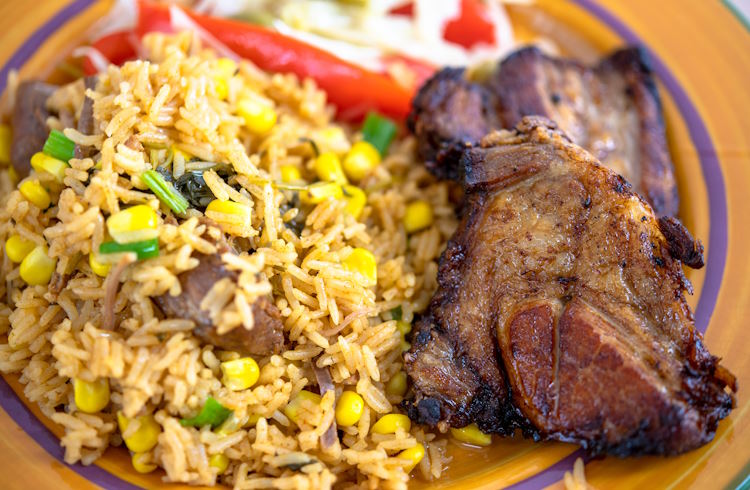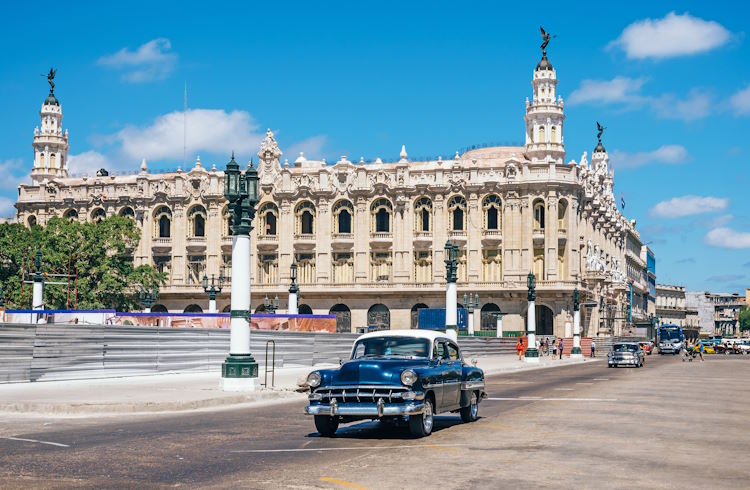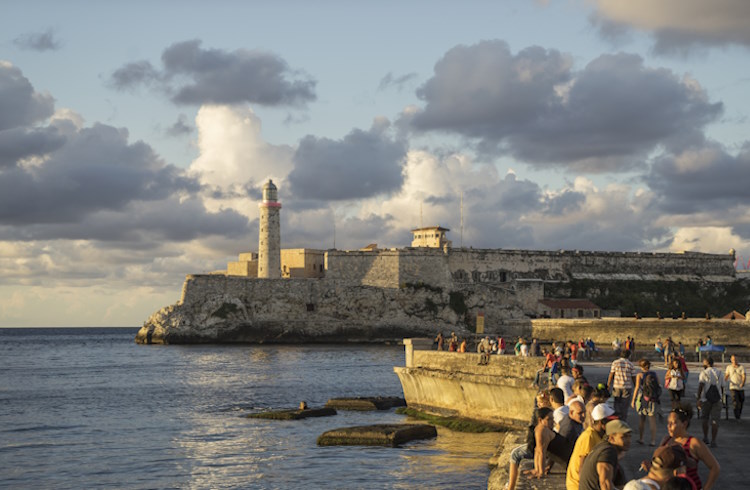Cuba tour leader Cassandra shares everything you need to know about the local currency, ATMs, and the cost of accommodation, transport, food and tours in Cuba.
 Photo © Goats on the Road
Photo © Goats on the Road
When I first traveled to Cuba, more than 10 years ago, money matters were top of mind. I didn’t have much money and, as an American, knew I couldn’t use my credit cards or pull money out of ATMs. After several multi-month trips in Cuba, I’d figured it out and began leading group tours there and also helping travelers arrange their own trips, regardless of their budget.
I’ll admit that when it comes to money matters, Cuba is a bit more complicated than most countries. Here, I’ll break things down so you’re prepared for your trip, whether you want to stretch your pesos as far as possible or splurge on life’s finer things.
- Is Cuba expensive?
- Currency in Cuba
- Cost of accommodation in Cuba
- Cost of food in Cuba
- Cost of transport in Cuba
- ATMs in Cuba
- Estimated travel budget in Cuba
Is Cuba expensive?
Cuba is a fascinating place to visit, not only because it’s been cut off from most of the Western world for more than 50 years, but also because it has centuries of history, excellent scuba diving, and some of the best musicians and dancers in the world. That means lots of choices when you travel here.
If you want to scrape by on the bare minimum, Cuba can be an extremely affordable destination. If you want to live it up in style, however, you can also find quite a bit of luxury.
Currency in Cuba
In 1990, Cuba started simultaneously using two currencies, the CUP and the CUC, which led to endless confusion for many travelers. However, in early 2021, the Cuban government unified the two currencies, so only the CUP is now used.
Other names for the CUP that you may hear are peso nacional and peso Cubano. Those names compared the CUP to the CUC (which was referred to as the peso convertible) and though the CUP is now the only official currency, the other names may still be used.
Cuba has always struggled with inflation, and it got worse when the currencies were unified. The price of goods soared and, as a result, there are many stores that sell goods, such as groceries and home supplies, in US dollars or Euros, because they are more stable. As such, it’s best to travel with US dollars or Euros. If you’re coming from the US, bring US dollars. If you’re coming from Europe, bring Euros. If you’re coming from Canada, bring CAD.
Legally, the CUP is the only currency that can be used but you’ll get the best exchange rate if you bring US dollars or Euros. That said, there are also many businesses, from restaurants to accommodation, that are happy to accept these foreign currencies, which they can hold and exchange for CUP when their value increases. Canadian dollars are also often accepted. To minimize the amount of cash you need to bring, you could pre-book some accommodations on a third-party site such as AirBnB.
Cost of accommodation in Cuba
Although most of your travel expenses within Cuba will be using the Cuban Peso (CUP), for illustrative purposes, costs in this article will be given in USD.
Like most countries, accommodation prices vary widely in Cuba. The country has many hotels that vary in terms of price and quality, but, per American law, Americans are only allowed to stay at casas particulares, private homestays operated by Cubans. Even though other nationalities face no rule in their home countries prohibiting them from staying in Cuban hotels, most travelers opt to stay in casas particulares anyway.
Most of these casas cost between $20-300, and most travelers pay between $25-50/night. Hotels and resorts (which often include meals) typically range from $100-700/night.
Cost of food in Cuba
Most casas particulares provide breakfast (usually for $6-10), and some can also provide dinner (usually from $8-15). In general, the meals you eat in Cuban homes are much better and much cheaper than what you’ll find in restaurants. If you do eat in restaurants, expect to find a huge difference between the cost of meals in restaurants catering to Cubans (where you might pay $3 for a small pizza or $6 for a plate of rice and chicken or pork) and restaurants catering to foreigners, where meals often start at $12-15.

Many travelers spend $4-10/day on bottled water. While you can save money by buying larger bottles of water, either directly from your casa or from stores, it’s still unnecessary and very bad for the environment. Cuba has a huge trash problem, and discarded water bottles make up a large part of the trash so it’s best for you, your wallet, and the planet if you bring your own water filter. Some Cubans drink tap water, but it’s best if travelers filter the water or drink chilled water that’s been boiled.
Cost of transport in Cuba
Unsurprisingly, the cheapest way to get around in Cuba is by bus. Within Havana, you can take public buses for mere pennies; to reach other cities, you’ll pay $6-60, depending on how far you go. For example, if you’re going from Havana to the popular beach city of Varadero, you’ll pay about $10 on the Viazul bus line, versus $120 for a private taxi.
If you want to take a shared taxi to another city, ask your host to help you arrange it, as many companies work with the owners of casas particulares to round up travelers going to the same destination. A private taxi from Havana to Viñales might cost $150, but you might only pay $30 for a seat in a shared taxi. Bear in mind the shared taxi might be a modern 4-passenger sedan with air conditioning, but it could also be a rusty 10-person American clunker from the ‘50s with no AC.
Within Havana, you can take a collective car, a colectivo, or almendron, which is a classic car that runs a fixed route for about $1-2 each way. Bike taxis (bicitaxis) are usually available in Old Havana and Centro Havana for about $3-5 for short routes.

ATMs in Cuba
Although you will find ATMs in Cuba, cash is king. ATMs are few and far between, particularly in smaller cities. Even if you find an ATM, it may not be working. Even if it is, it will not accept American cards. And even if your bank is not set up in the United States, bank lines can have very long lines and bringing cash is easier, more reliable, and often results in getting you a better exchange rate.
Estimated travel budget in Cuba
When planning your travel budget to Cuba, consider not only your major expenses, such as food and accommodation, but also tips, internet use, and entertainment costs, such as admission to museums, nightclubs, and performances, where you may spend additional money on drinks and snacks.
Here is a sample budget for a mid-range traveler. If you plan to take buses and stay at cheaper accommodations, your costs will be less. If you plan to hire private taxis and stay in high-end places, your costs will be higher.
Accommodation: $30-40/night
Food: $15-25/day
Transportation: $10/day, plus $30-35 each way if you plan to visit other cities by shared taxi
Internet: $1/day
Tipping: $5-7/day
Guided Tours: Prices vary, but many group walking or cycling tours cost $20-40, before tip
Museum Admissions: $3-5
Nightclub Admissions: $10-25
Alcohol: $4-7/drink
Related articles
Simple and flexible travel insurance
You can buy at home or while traveling, and claim online from anywhere in the world. With 150+ adventure activities covered and 24/7 emergency assistance.
Get a quote


No Comments